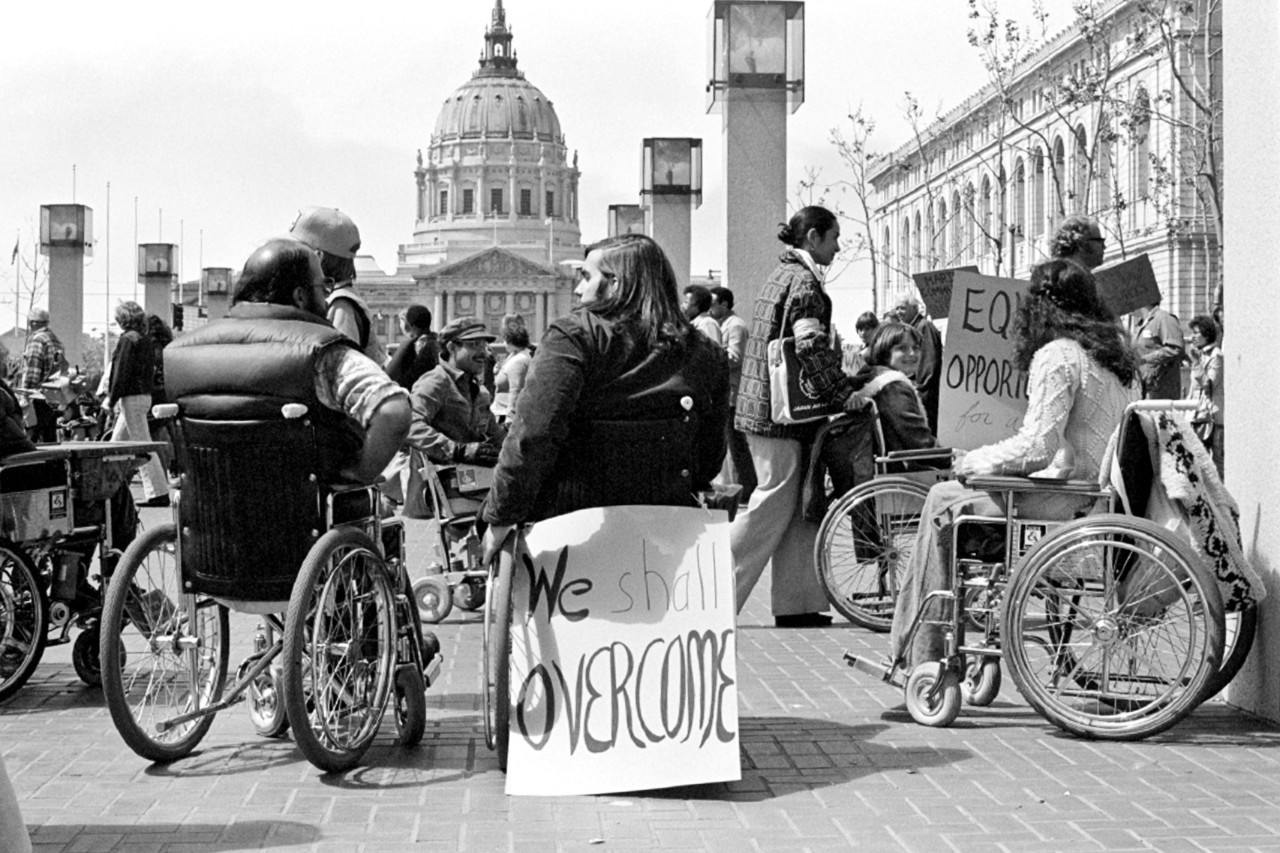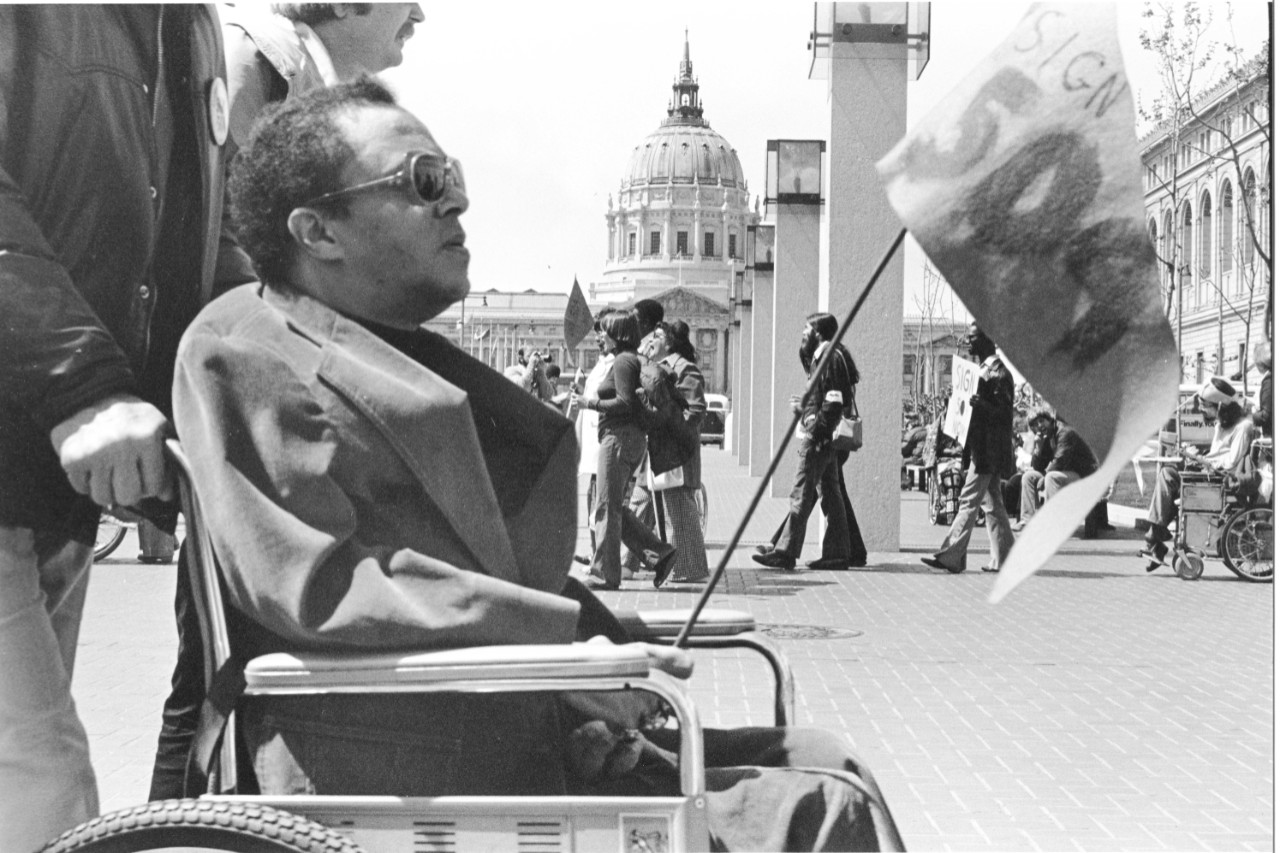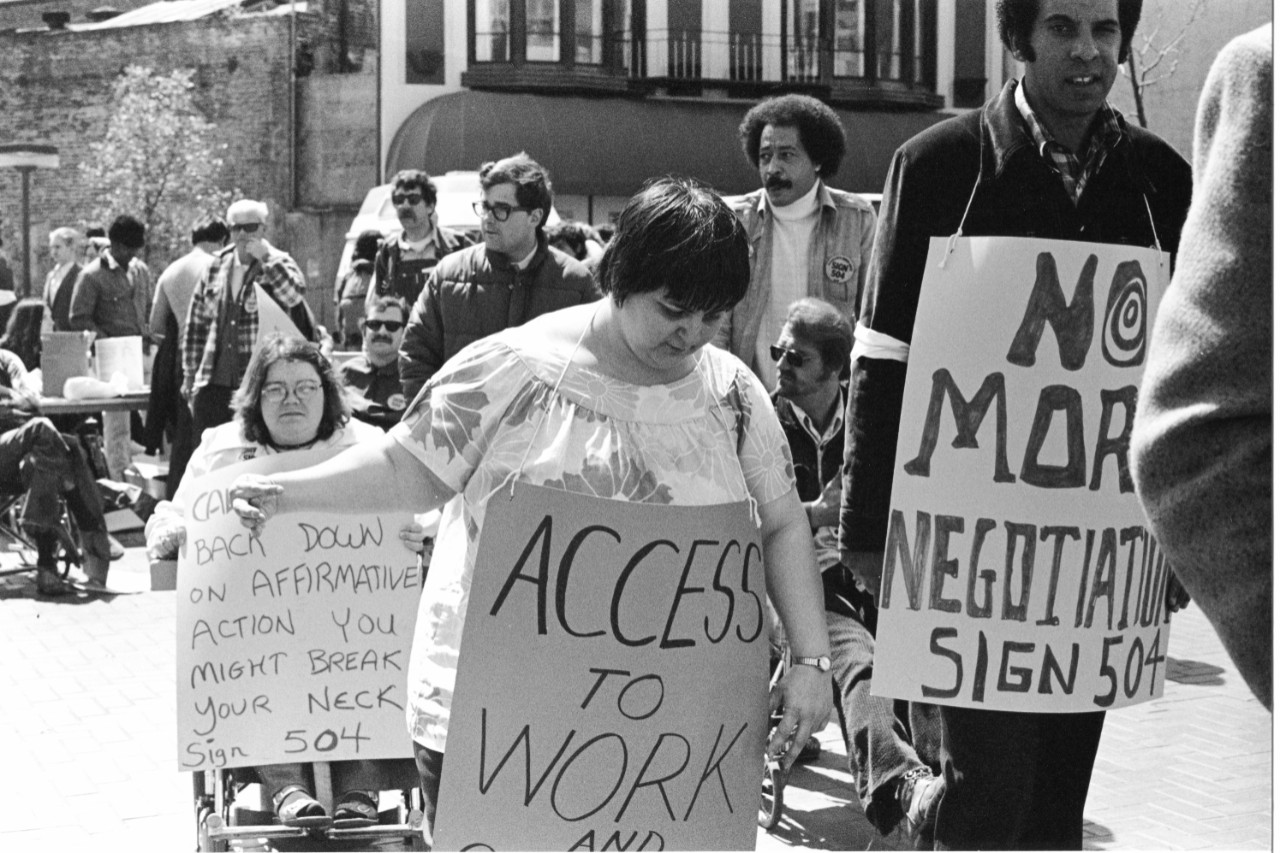Breaking Ground 103 - Looking Back, Looking Forward: Celebrating 30 Years of the ADA
By Stephanie Brewer Cook, ADA Coordinator, City of Knoxville
Special thanks to Anthony Tusler, who gave us permission to use his photos of the first day of Section 504 protests in San Francisco, April 5, 1977, and his compelling photos of the modern lives of people with disabilities.
Thirty years after the Americans with Disabilities Act (“ADA”) became federal law, how far have we come?
It seems so long ago that advocates before us had to chain their wheelchairs together. They did this to force the government to recognize that a lack of accessible public transportation was keeping people with disabilities from leaving their homes (or the institution in which they lived). This meant they were unable to participate in society equally to people without disabilities.
It was even longer ago (1977) that advocates held a lock-in of the federal Health, Education and Welfare (HEW) Building in San Francisco. They wanted to draw attention to a federal law (the Rehabilitation Act of 1973 or “Rehab Act”) that banned discrimination against people with disabilities in federally-funded programs. The law was not being enforced because its regulations had not yet been signed. Some of these advocates “camped in” for almost a month, at the peril of their own health and well-being. Was it a drastic move? Some may say “yes,” but it was necessary. Without that selfless, bold act, we would not have seen action on the regulations for including people with disabilities in federal programs.
After the Rehab Act’s regulations were finally signed in 1977, advocates turned their focus to the inclusion of people with disabilities in broader ways, beyond just federal programs. In the 1980s, people with disabilities crawled out of their wheelchairs and dragged their bodies up the U.S. Capitol steps. They demanded that the government pass legislation that would guarantee people with disabilities the opportunity to:
- participate in government,
- visit commercial businesses,
- seek and obtain employment, and
- use public transportation.
On July 26, 1990, the ADA was signed into federal law, giving people with disabilities civil rights protection from discrimination and a promise of a level playing field in all aspects of life.

In 2002, 12 years after we were “guaranteed equality” by the ADA, Americans with disabilities were promised the ability to vote at the location of their choice. The Help America Vote Act (HAVA) gave details on how voting precincts and processes are to be accessible to people with disabilities. HAVA strengthened the collective voice of people with disabilities by making it easier for us to vote.
Three decades after the ADA became a reality, we can agree that we’ve seen some very positive changes. The built environment is more accessible. Cities and counties are creating pedestrian pathways, changing policies or procedures, and increasing access to their programs. However, we can also agree that we have a good ways to go if we are to experience true, equal access: in employment, education, home and community-based services, appropriate accommodations, access to healthcare, and more.
Knowing that there is work still left to do, how will you encourage change on behalf of people with disabilities? There are many ways that we can continue to advocate for equity and inclusion of people with disabilities. Consider engaging in your community as a person with a disability:
- Volunteer at a favorite charity.
- Visit the local park.
- Sign up for a class with your local parks and recreation department.
- Get nominated for a public advisory body.
- Send an email to an elected official about something that matters to you.

It is my hope that after 30 years, we all have more choices in the ways we advocate for ourselves and other people with disabilities. In my personal and professional experience, I find many opportunities for people with disabilities to advocate, including:
- Request a meeting with your local government representative.
- Ask about the efforts being made to include more people with disabilities in local programs.
- Go to public meetings and give your thoughts on proposed new developments or policy changes.
- Sign up to speak at public forums.
In other words, be present and get involved!
Today and in the years to come, we must continue to focus on better access to employment, healthcare, civic participation, accessible housing, transportation and pedestrian pathways, public facilities, and online experiences equal to people who do not have disabilities. If we keep educating and advocating, can you imagine where we will be when we celebrate the ADA’s 50th anniversary of becoming federal law?
Will we speak up and educate when a public policy or space seems to exclude people with disabilities? Will we work with our lawmakers to change laws that negatively impact people with disabilities? Whatever we do, let’s be mindful of the advocates and people with disabilities who will come after us. In 2030, 2040, and 2050, what will they say about the advocates that came before them? The answer to that question lies with each of us.
Stephanie Brewer Cook is a Partners in Policymaking graduate, former Chair of the TN Council on Developmental Disabilities, UT Knoxville alumnus and the ADA Coordinator for the City of Knoxville.